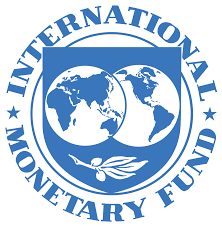 BY Nageshwar Patnaik in Bhubanbeswar, September 27, 2024: India is poised to be one of the global superpowers sooner than later. India (39.1) has overtaken Japan (38.9) to become the third most powerful country in Asia followed by USA (81.7) and China (72.7), according to the Asia Power Index recently released by the Lowy Institute.
BY Nageshwar Patnaik in Bhubanbeswar, September 27, 2024: India is poised to be one of the global superpowers sooner than later. India (39.1) has overtaken Japan (38.9) to become the third most powerful country in Asia followed by USA (81.7) and China (72.7), according to the Asia Power Index recently released by the Lowy Institute.
India’s rise to the third position reflects its expanding capabilities in several key areas, including defence, diplomacy, and economic growth. India’s rise in the Asia Power Index is more than a symbolic shift; it highlights the nation’s potential to emerge as a global superpower in the coming decades. An S&P Global report said last week that India is on track to becoming the third-largest economy by 2030-31.
This shift in rankings marks India’s increasing influence across the continent, strengthening its place as a major global player as of now. It is all set to emerge as a global superpower in the next ten years, delving into its economic growth, technological advancements, demographic dividends, and evolving geopolitical stance. Few nations have shown as much promise and potential for rapid ascent as India. With a burgeoning population, a rapidly growing economy, and an increasing role in international affairs, India is widely regarded as a rising superpower.
Since its birth as a nation more than 50 years ago, India was virtually poised on the edge of two very contrasting futures. On one side lay greatness; on the other, collapse. India has been synonymous with poverty in the Western mind, and poverty will remain both a moral and a practical problem and a political embarrassment to any government. However, India has managed to bring down ‘extreme poverty’ below 3 per cent of its population, according to the latest data of the World Poverty Clock.
Nearly 34.4 million people are living in extreme population in 2024 against 46.9 million in 2022. As a share of total population, number of people living in extreme poverty has come down to 2.4 per cent from 3.3 per cent in 2022.
 A recent discussion paper by NITI Aayog, titled Multidimensional Poverty in India since the year 2005-06,’ said that multidimensional poverty has declined sharply from 29.17 per cent in 2013-14 to 11.28 per cent in 2022-23, resulting in 248.2 million individuals escaping multidimensional poverty during the 9-year period. This could mean achieving significant milestone in the direction of first of 17 Sustainable Development Goals (SDG), as prescribed by United Nations with a timeline of 2030.
A recent discussion paper by NITI Aayog, titled Multidimensional Poverty in India since the year 2005-06,’ said that multidimensional poverty has declined sharply from 29.17 per cent in 2013-14 to 11.28 per cent in 2022-23, resulting in 248.2 million individuals escaping multidimensional poverty during the 9-year period. This could mean achieving significant milestone in the direction of first of 17 Sustainable Development Goals (SDG), as prescribed by United Nations with a timeline of 2030.
The Congress, which ruled India from 1947 to 1978 under Jawaharlal Nehru and his daughter, Indira Gandhi, was deeply influenced by British Fabian socialism. The country’s “top-down” approach to economic planning paralleled a political system dominated by the upper castes. In 1991, Congress leader and the then Prime Minister Narasimha Rao began a program of economic liberalization, including industry deregulation, privatization of state monopolies, and easing of foreign investment rules. The transition to a more market-oriented economy got accelerated after the BJP came to power in 2014.
The notorious system of quotas and import licenses for machinery and consumer goods has been dismantled. Foreign ownership of Indian firms is now possible, and international brands including Pepsi, Coca-Cola, IBM, Sony, and Phillips have entered the Indian marketplace, giving consumers a much wider range of choice. India offers overseas firms a unique asset: the talents of educated, highly trained, English-speaking elite.
Moreover, India’s growth continues to be strong despite a challenging global environment, and a recovery in agriculture will partially offset a marginal moderation in industry with services expected to remain robust, the World Bank said in its latest India Development Update.
Amid geopolitical uncertainties and relatively restrictive monetary policy, global economic activity experienced a deceleration in 2023 to 2.6% while India showed “extraordinary resilience against challenging external conditions” and grew at 8.2% in FY24, as the fastest-growing major economy in the world, it added.
In an interview with ET last week, John Chambers, who heads the India US Strategic Partnership Forum and is Chairman Emeritus of CISCO, said, “I always try to think far out. India will probably be 90 to 100% larger than China at the end of the century and (by a) 30 to 40% margin of the US. That is the most likely outcome. [Becoming the second largest economy] could happen somewhere in the 30-40 year type of window. I think it needs to be adjusted along the way; because it (India) has moved faster than anybody thought it would, by a lot.”
JPMorgan’s Managing Director of Asia Pacific Equity Research, James Sullivan, expects a massive $100 billion of inflows coming into India over the next few years. In the economic outlook of Asia Pacific, S&P Global Ratings also retained its GDP growth forecast for the 2025-26 fiscal at 6.9 per cent and said solid growth in India will allow the Reserve Bank of India to focus on bringing inflation in line with its target. A few days ago, Deloitte said
India continues to be a bright spot in an otherwise gloomy global outlook and the country could clock a 7 per cent growth in the current fiscal despite the headwinds.
 Early this month, the World Bank raised the growth forecast for the Indian economy for FY25 to 7% from 6.6% projected earlier. A few days earlier, Moody’s Ratings had revised upwards India’s economic growth projections for 2024 to 7.2% from 6.8%. Earlier, the International Monetary Fund (IMF) and Asian Development Bank (ADB) had revised upward growth forecast for the Indian economy to 7% for FY25.
Early this month, the World Bank raised the growth forecast for the Indian economy for FY25 to 7% from 6.6% projected earlier. A few days earlier, Moody’s Ratings had revised upwards India’s economic growth projections for 2024 to 7.2% from 6.8%. Earlier, the International Monetary Fund (IMF) and Asian Development Bank (ADB) had revised upward growth forecast for the Indian economy to 7% for FY25.
While the economy continues to grow, significant income inequality persists, particularly in rural areas. India’s complex neighbourhood, with ongoing tensions along its borders with China and Pakistan, poses a challenge to its regional stability. To fully realize its potential, India must continue investing in its physical infrastructure, including transportation, healthcare, and education.


Leave a Reply
Be the First to Comment!